[Page updated: 08/06/2015]
Metroid Prime is a first person action adventure game developed by Retro Studios and published by Nintendo in 2002 on the Gamecube. Critically lauded and held in high esteem by many, the game is widely regarded as one of the platform’s stand-out titles. Its road to becoming a jewel in the Cube’s crown, however, was a bumpy one. From starting life as the foundation for an original IP, gaining the Metroid license, to being scrapped and rebuilt from the ground up; taking a peek behind the curtains of its development proves to be hugely of interest.
3 Female Bounty Hunters & A Space Nazi
The origins of Metroid Prime date back to the year 2000. Retro Studios was an all but unknown entity and the series had lain dormant for six years with no sign of a revival in its imminent future, but all hope was not lost.
Almost immediately following its establishment in 1998, the company’s workforce had been split into 4 teams to work on pitches to be delivered to Nintendo’s management. Retro had originally been founded under the mission statement of complimenting the big N’s line-up with more adult-oriented contented and as such, was attempting to deliver on this promise to the best of their ability. Despite this, Nintendo’s first impressions of their efforts were less than complimentary.
A few months into 2000, Shigeru Miyamoto, a pre-presidency Satoru Iwata and Nintendo of America’s then senior director of production, Tom Prada, paid the Texas studio a visit to check on their progress and cast a critical eye over proceedings. Up until this point, Retro had been engaged with conceptualisation on their several projects in the works. There was NFL Retro Football, an RPG named Raven Blade, Car Combat/Thunder Rally, and an enigmatic, untitled action/adventure game. When NCL’s juggernauts descended, each game was submitted as a 3 page design document with early material (e.g. test animations, drawings, incomplete engine work etc.) as full prototyping had yet to begin.
The specifics of what Miyamoto disliked about the former three presentations are unclear to this day, but he reportedly wrote each of them off with little hesitance. ‘Action Adventure’ was the lone exception to this. Details on the project are sparsely available, though we have managed to recover some materials from it over the years. It was set to be a sci-fi themed first person shooter and featured three intently sexualised female protagonists in tight-fitting space suits, fighting an onslaught of insect-like aliens and a neo nazi villain.
“There was only one main story really, three hot chicks kicking butt!” – Former Retro Studios developer (via IGN)
It is commonly thought that the game was, at this juncture, ‘reworked’ into a Metroid game; although, this is not entirely accurate. Miyamoto, in actuality, first suggested Retro work on a new Metroid in a separate discussion from ‘Action Adventure’. It was later during his stateside trip, in a hotel lobby, that he would realise the potential for its “mature looking” engine to be repurposed for such a game and suggest it be so. In the months that followed, Retro would do just that – modify the engine to accommodate for what was, at the time, going to be a Metroid third person shooter. In the end, very little of the original Action Adventure proposal survived the transition to the realm of space dragons and brightly coloured battle armour.
Tallon IV: The Early Years
Delving into the vast world of concepts and other materials created early on for Prime bears tremendous fruit for those with a taste for the unseen. Thanks to the diligent research efforts of Mama Robotnik, The Cutting Room Floor, Parax, Bearborg and many others, the amount of assets preserved is in no short supply.
Monkey Madness
In some of the earliest concepts created for Prime, dating all the way back to its inception, you may notice a certain number of documents carry an unusual quirk about them. In one set of environment sketches, for instance, there is an inexplicable, recurring use of the word “monkey” to label rooms and features. Examples of this include the ‘Incinerator Drone’ boss, which is tentatively dubbed ‘monkeyFlamethrower’. What’s perhaps even stranger is that the filename designated to its music theme in the game is ‘rui_monkeylower’.
An anonymous contributor formerly of Retro Studios candidly explained:
“BloodMonkey was the name of a character in the game before it became a Metroid game. That’s why the “monkey upper” etc room names in Tallon IV.”
In an interesting twist, the ex Retro staffer appears to have confirmed that there was a connection between Action Adventure and Metroid Prime in more ways than previously understood. The implication strongly seems to be that Prime inherited more than just an engine from its untitled predecessor; perhaps even as much as level design, as well.
The Bosses You Didn’t See
One rather incredible collage piece uncovered by Mama Robotnik, via the portfolio of Andrew “Android” Jones, grants us a glimpse at three boss creatures that never made the final cut; in addition to an older version of the ‘Parasite Queen’.
Kraid, as seen in the top left, was initially envisioned more closely to his Super Metroid appearance. His design was originally more organic than it would later turn out and sported large spears extending from his gut in attack. As ideas for the iconic reptilian foe continued to flow, he would undergo a number of alterations later in development.
Another scrapped concept was a boss intended for the ‘Phendrana Drifts’ area, or ‘IceWorld’, as it was referred to at this stage. This four armed behemoth, tentatively titled ‘IceBoss’ was among the first boss creatures ever drawn up for Prime, although its time being a part of the game was short-lived. It made it far enough for a full model to be rendered and animated, but was soon thrown out within the first year.
Mike Sneath, the creator of its 3D model disclosed the circumstances of its removal over on YouTube:
“…that is a creature that was made during the first year of development on Metroid Prime. Many of the characters created in the first year were either cut or modified. The reason for this is that Nintendo felt that some of early characters looked more like monsters for an RPG game and not for the Metroid world. So no this is not another Sheegoth but it was creature that was originally designed for the Iceworld”
Lastly, is a mysterious insectoid villain. This boss, which can be seen in the portfolios of numerous Retro veterans, eludes even us. It is unknown whether or not it was intended to be a native of Tallon IV or space pirate in origin. Speculation pushes us towards the latter, due to concept art seemingly for an alternate design of the same creature that was hosted on Nintendo’s microsite for Prime back in the day:
The above portrayal of the cyborg baddie shows his flying implement, which was swapped for a jet pack in his updated model, was once a metroid. Given the space pirates’ close association with them, we’d say this isn’t venturing too far out of the realm of possibility.
It’s also worth noting that it bears a resemblance to Gene Kohler’s ‘Flying Pirate’ model, which was included in the final build. One possibility to consider is that this could have been a higher ranking member of the airborne space pirate branch.
Abandoned Power-Ups
Excavated by The Cutting Room Floor from the files of the released game are these unused scan images of power-ups. They appear to be graphics illustrating Samus’ ‘shinesparking’ ability, as well as the ‘spring ball’, which later re-emerged in Metroid Prime 3: Corruption.
Given that there is no area in the game that could ideally facilitate shinesparking, we had originally surmised that it was dispensed with during early development. In an interview with Kotaku, senior designer, Mike Wikan confirmed this:
“The Speed Boost was something we were interested in trying early on, but we found that limitations imposed by the scale of our environments — as well as the first-person player viewpoint — made that system less appealing. We discussed the possibility of developing something in third person that might work, but in the end determined that time spent developing that system would take away from so many other things we felt might be better explored.”
A Last Living Chozo?
In one of many theories devised by Mama Robotnik, this art from within the game’s first year of development seems to depict a surviving member of the ‘chozo’ race; indicating that one could have once been a part of Prime’s narrative.
The Unseen Metroids
As revealed by Danny Richardson, a former Retro Studios artist, there were several, considerably larger versions of metroids conceived in pre-production; all of which ultimately were never implemented. These oddly warped designs appear to be heavily mutated forms of the metroid species. One possibility is that they were going to be another result of the space pirate’s ill-fated experiments with phazon.
Another of Andrew Jones’ concepts, which shows Samus meeting Metroid Prime itself for the first time, has two other giant metroids are present. These abnormal, blue variants appear to be pulsating electricity from their claws and are much greater in size than any of the standard metroids seen in the released game.
The infamous ‘big metroid’ from the ending of Super Metroid may have been a part of Retro’s plans at some point, too. An unused texture unearthed from Prime’s files by The Cutting Room Floor reveals what appears to be an asset meant for Samus’ scan data:
Incidentally, this very same sprite cameos very briefly in the title’s E3 2001 trailer. A small nod to past installments, or an idea that never came to fruition?
Unrealised Plans For Meta Ridley
If a set of early concept art compiled by Mama Robotnik is anything to go by, it would certainly seem like Retro’s implementation of Meta Ridley was originally going to differ greatly from how it turned out. In one picture, for example, we can see him in a cavernous environment resembling the Phazon Mines. Although, in the final game, he is nowhere to be seen in that region:
Moreover, in two earlier conceptual images, Retro contemplated various other looks for the freshly mechanised beast; both of which experimented with taking his metal exoskeleton to new extremes:
Another fascinating image sourced from the official website for Prime shows a very odd interpretation of Ridley with a brighter, less intimidating colour palette and feathered wings. Fans have taken to referring to this mysterious drawing as “Dark Possessed Ridley”, as per the filename it was hosted under on Nintendo’s site, ‘Dark_Possessed_Ridley’.
The Return of Mother Brain
As first highlighted by Mama Robotnik, an abstract concept art piece made by Andrew Jones features recurring series antagonist, Mother Brain. The character is not known to have been present in any build of the game, suggesting that this was something deliberated over in the beginning, but soon abandoned.
A Longer Endgame
In yet more insightful material found buried in the portfolio of Mr Jones and the now closed official microsite, we can get a look at an older vision for the impact crater from the finale of the game. This alternative version of the last area appears to have been far more expansive than anything seen in the game itself.
One storyboard refers to these areas as “the Metroid Prime entry lair”, which implies that this would have immediately preceded the final boss. As this entire section was added to the game within a hectic few months at the tail end of development, it is likely that this huge zone was reduced due to time constraints.
Spaceworld 2000
The game made its debut on August 24, 2000 during a presentation Nintendo gave, detailing its planned slate of Gamecube games for the first few years on the market. Metroid Prime was among them, glimpsed at in FMV format. Although, on this occasion, it remained nameless, as the game’s title had yet to be decided. Most early documents from around this period merely referred to it as ‘Metroid’, or on occasion, ‘Metroid 2003’; its original estimated year of delivery.
At this point, it was still in very early in pre-production, but Retro Studios couldn’t pass up the opportunity to be a part of the publisher’s monumental Spaceworld blow-out reel. As a solution, they had their artists hastily put together an environment and models for a quick teaser video with Samus running through a corridor on board the ‘Frigate Orpheon’.
The clip itself was pre-rendered, albeit made up of real assets from the game at this stage in its development. For instance, the first model for the varia suit shown here was created by 3D artist Mike Sneath, before his successor Gene Kohler took over and was soon instructed to revise it as development marched on. Sneath’s design was made to be closely reminiscent of Super Metroid.
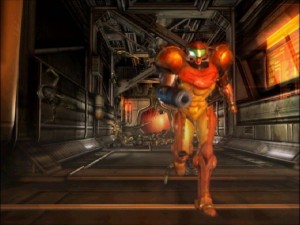
“The original Samus looked fantastic in my opinion and the fans seemed impressed and excited by what they saw.” – Gene Kohler, speaking to N-Sider.
Andrew Jones was the artist behind the initial concepts for each suit design and had previously went through extensive exploration of various styles before settling on this one. His other drawings considered such ideas as having a more “aggressive” looking visor and a thinner, “more athletic” waist.
Bernadette LaCarte, the company’s senior artist at the time, was responsible for the earliest iterations of its user interface. Her concepts realised a look inspired by the chozo architecture of the series with spherical menu layouts. These were later dropped about a year into Prime’s development cycle, as its art style continued to evolve and her duties at the company changed.
LaCarte also contributed an ultimately unused title screen design to the project. A 1 second video loop of this was recovered by The Cutting Room Floor when they sifted through the contents of a beta demo from July 2002. Interestingly, its title logo is accompanied by the phrase “First Person Adventure“, which isn’t mentioned in any other recovered documents. Could this have been a subheading once considered for the game at an early phase?
May 2001 – E3 2001
In May 2001, the curtains would truly lift on the project. A beta montage shown during Nintendo’s E3 press conference dubbed it ‘Metroid Prime’ and gave a more substantial look at the next frontier for the iconic bounty hunter.
The E3 clip serves to capture well the project’s visual style at this point in development. Samus is once again shown in her first design with noticeably different proportions. She seems to be slightly shorter and her squatted poses serve to amplify this impression. Her arm cannon is distinctly unlike its final incarnation, as well, as it’s covered in exposed mechanical detail
This is just one of the designs explored for the arm cannon throughout development. As seen in these early concepts from Metroid Prime: Trilogy’s bonus content, there were considerations for added extra bells and whistles, like a charge meter.
Further analysis of the trailer reveals an alternative setting for the parasite queen, the title’s opening boss encounter. The final game pits Samus against this same creature in a cylindrical chamber known as the ‘Reactor Core’, whereas the environment seen here is far more narrow and sees the monster scaling the ceiling and walls of the facility. As it happens, this was more than material made for a mere conceptual video; it was a planned part of the Frigate Orpheon area that was left on the cutting room floor.
Speaking to N-Sider, Mike Sneath recounted the reason behind its removal:
“There was a previous chamber, which was scrapped because the game play wasn’t working properly so the designer remade the chamber.”
One Fateful Month In Nintendo History
Development continued on track following its announcement, but Retro Studios was about to be rattled by a series of events with big ramifications. In July, Miyamoto would pay them his second visit of the year to review their work and deliver the cutthroat brand of guidance his name was built upon. Within the first 24 hours, he had went over prototype builds for Raven Blade, Retro Football and Thunder Rally, before promptly cancelling all of them. Unsatisfied with the way they were going, the producer had workers from each reshuffled into Prime, while 20 or so (mainly from the TR team) were let go.
One offshoot of these decisions was the subsequent removal of Tommy Tallarico Studios from the project. Previously, they had been in charge of sound effects, but the discontinuations of Thunder Rally and Raven Blade freed up Retro’s in-house audio team, meaning their services were no longer required.
Correspondence between Tallarico himself and Retro’s Scott Peterson was released on his blog, confirming that some of the sounds they created became very integral to Prime:
“I am in the process of archiving out all of our audio data and was hoping to get a little help from Tallarico Studios. Almost all of the sounds your studio provided were utilized in some way or another, and a few have really become signature elements to the game and to Samus herself.”
However, as we have learned, a decent amount of Tallarico’s work was discarded, too. Comments Miyamoto made at Spaceworld 2001 in August confirm that he wasn’t yet content with the audio FX around this stage of development, which might explain why:
“As a matter of fact, we were about to present Metroid Prime to the Space World 2001 show, but it doesn’t yet have good enough sound effects, and also I was not fully satisfied with the control. So I decided in the end, just a few days ago, that we should not bring it to the Space World show”
As Prime’s development staff expanded amidst the fall of their side projects, Miyamoto prepared to drop yet another bombshell. Up until this point, it had been the subject of extensive debate internally which perspective the game should assume: third or first person. Initially, it was the producer’s instinct to suggest the latter, but he had conceded to a majority vote at Retro, which ruled in favour of third person. In its earliest forms, Metroid Prime was thus being prototyped as a third person game, despite trepidation surrounding how functional the camera would be:
“Right around the time of signing the Metroid project, I know there was a lot of discussion in the studio and at Nintendo if the title was going to be first-person or third-person. And right before that, we’d done some work with Rare on Jet Force Gemini, and we had some real problems with the camera, so it was a major discussion.” – Mark Pacini, speaking at MIGS 2007 (Via Gamasutra)
When Miyamoto returned to evaluate a vertical slice of the game, he instructed the team to change course and rework it into first person, believing exploration in third person wouldn’t be sufficiently intuitive. This meant that a great amount of material already made for Prime had to be tossed away and rewritten from scratch.
The Evolution of Prime’s Aesthetics
The fate of the game was soon in flux at Retro Studios, and so was its visual style. As Gene Kohler joined the team, having transferred from working on Raven Blade, he was first tasked with redoing the model for Samus. His spin on the character was vastly different from anything seen in the finished product, updated to fall in line with its notably more dark art direction at the time:
“When I was first brought onto the Prime team, the art direction did seem to lean heavily towards the “crude” style. It was very dark, grimy, chipped, scratchy…” – Gene Kohler, speaking to N-Sider.
Shortly thereafter, however, the game would undergo a far sweeping visual overhaul. Many earlier assets for creature designs, as well as Kohler’s Samus were binned and had to be redone.
In his interview with Shinesparkers, Mike Sneath elaborated:
“The entire first years worth of characters I modelled for the game were cut. At first we were making all the enemies looking just like the old Metroid 2D enemies. Nintendo, later decided that they wanted the enemies to have a new look so we scrapped all of those creatures. These weren’t just models that were scrapped but these were enemies that had a full set of animations and some even had AI programmed. I’m actually very glad Nintendo made that call because I think the newer designs that Jones and Keller came up with was a big improvement over the original 2D designs.”
Among the many designs thrown away was a plethora of more traditional space pirates. Originally, Retro’s artists envisioned the pirates as assuming a look more reminiscent of those seen on Zebes in Super Metroid and Metroid: Zero Mission. They were more organic looking, less heavily clad in armour and even boasted their trademark claw cannons.
Other scrapped explorations include a set of pirates with biomechanic weaponry, such as turrets linking directly to their bodies.
‘Rippers’ was one species that the change in direction wiped from the game completely. These highly resilient critters were typically used as a means of traversal in older titles and could be utilised as platforms once frozen. Prime was going to alter their usage, but still maintain them as a way for Samus to better negotiate gaps in her environment. Using the hooks on their underbellies, players would have been able to use them as access points for the grapple beam.
Concept art:
Remnants of the ripper were uncovered by fans datamining the game shortly after its release when they found its completed 3D model:In an effort to focus on more original creatures, Retro replaced each one with a new type called ‘Gliders’, which serve essentially the same purpose. Although, by simply tweaking its object property, fans can re-insert it with relative ease:
Spaceworld 2001
On August 23rd, 2001, Metroid Prime would emerge to the public once more in beta form at Spaceworld. The event played host to its world gameplay debut, unveiling that it had been reborn as a first person game, to the skepticism of many.
Even from the few snippets of footage put together, it is plain to see the gulf of differences between this and the completed game. The trailer showcases an alternate HUD for the combat visor, a clunkier arm cannon, a noticeably smaller layout of the ‘Main Plaza’ facility from the ‘Chozo Ruins’, and many other intriguing contrasts.
The power beam, for one, seems to have functioned quite differently in this build. In the final game, said beam cannot be used instantly in conjunction with missiles; the player is forced to wait a brief moment for the missiles to load in Samus’ arm cannon when switching between the two. Here, however, missiles are shown on a separate, external tray protruding outwards, which suggests this might not have always been the case. Furthermore, it is shown that the missiles can be fired at a far more rapid rate than they can in the finished product:
The Ever-Changing Look of Samus
Shortly after Spaceworld closed its doors for another year, in September, Gene Kohler was called upon to reiterate on the 3D model for our orange clad heroine. The artist was summoned to add vessels of blue energy to the back of her suit in order to give context to the glow effect radiating from the cracks of her morph ball form. In his touching account of the day this happened, Kohler recollected the story behind these blue canisters (via N-Sider):
“I am sure we all remember where we were at and what we were doing on 9/11/01 the day the Twin Towers in New York were attacked. Well, I was working on creating the blue canisters for the Varia suit. I woke up that morning received a phone call from my brother, Rick Kohler (an environment artist on Prime), at about 9 a.m. telling me to turn on the TV. I watched in disbelief at what I was viewing. I thought about staying home from work that day to remain glued to the TV I was shocked and much too furious to work. I came to the conclusion that I would go to work continue with my day the best I could. Reason being is that one of the main objectives that terrorism wishes to accomplish is to create havoc, to disrupt our free way of life and halt progress. My perspective of what I was doing was to not allow their actions to halt my progress… to disrupt my day. I would continue to go to work and finish the blue canisters on the Varia suit. I did not go home that day until they were complete. [Smiles]”
The blue canisters were featured in the game until a few months into 2002 and can be spotted in one screenshot from IGN published on February 22, 2002:
Following these advanced press previews, Gene was then instructed to revise his Samus model once more. The small containers of blue were eventually decided against and the scratched surface of her armour was altered after an order from the higher ups:
“I do not know who made the call to create Samus in a more clean and polished style. One day I came into work and had the order to create the Samus model from scratch and skin her in a clean polished style the look you see when playing through Prime.”
Samus Aran’s Gunship
As the protagonist’s visual approach transformed, so did her ship. Later christened the ‘Hunter Class Gunship’ in the final game, it was at this stage known as the ‘Stealth Strike Corvette’. The original craft, in line with the older art, was far more worn and rusted. The windows of its cockpit were tinted black, which was then reverted to the classic green shade of past adventures.
Oddly, the landing pad shown in the above screenshot from this outdated snippet of the game was stripped away in its entirety some time after this was captured. We believe it to have been an indoor docking station from a previous layout of the Frigate Orpheon, before it underwent a major revamping.
Altered Bosses
It is known that pre-production art and other documents of bosses such as the mutant plant being, Flaahgra was strayed from greatly as time went on. Originally, ‘Flaahgra’ (then known simply as ‘Plant Boss’) was imagined as having large tentacles extending from the nervous system at the base of its body.
In his interview with Shinesparkers , Mike Sneath explained the reason for this:
“The first version of this boss had all the tentacles as part of the plant. Later the designers decided to detach the tentacles and make them more part of the room like you see in the game. The room and creature sort of evolved together as the designers worked their way through how this boss character would play out.”
It also appears as though Retro had, for a time, played with the idea of inserting Flaahgra into an entire other area of the game. Earlier concepts placed him in a mysterious dark forest environment, which was ultimately cut. Nonetheless, this missing swamp region of Tallon IV seems to have gotten far enough to receive a pre-rendered mock-up, where Flaahgra instead emerges naturally from its seed:
‘Thardus’ is another monster which was planned very differently in the beginning. As Mike Sneath divulged, the arctic rock giant was first intended to be positioned in a lava area, most likely ‘Magmoor Caverns’:
“if I remember correctly Thardus was suppose to be in a large lava pit arena but I believe we had to change it due to time constraints.”
As you can see below, ‘Lava Thardus’ has no big distinguishing features from the finished product, save from its fiery core:
Those Frenzied Final Months
If the testimonies of ex Retro devs like Mike Sneath and data harvested from a beta version of Prime are anything to go by, the closing several months of production on Prime were frantic to say the least. The majority of the entire end section, it would seem, went utterly unfinished until very late on. As the developers hurried to finish Metroid’s crucial first foray into 3D, plenty of cuts and changes were made to ensure its quality and meet deadlines.
Unlockable Super Metroid
A screen grab of scrapped UI sector found on Danny Richardson’s site by Mama Robotnik, showed that Super Metroid was possibly once planned as a Metroid Fusion GBA connectivity bonus.
One former Retro Studios developer who was an integral part of Prime’s creation revealed that Super Metroid was, in fact, fully implemented in to the master build at a later stage of development. David Kirsch (AKA ‘Zoid’), who was a programmer on Prime, was singlehandedly responsible for its addition.
Although, when it was brought to the attention of Nintendo’s management that Zoid had used a third party emulator to achieve this, he was instructed to remove it. The publisher held a strict policy against the use of emulators they didn’t own themselves in their own titles, since they did not at this stage have their own in-house emulator capable of running SNES games on Gamecube.
Sovas
A creature that was dropped fairly late on was the fire-dwelling ‘Sova’, which previously was present in such games as Super Metroid and later, Metroid Fusion. A model of the Sova can be spotted in a pre-release build of Prime; a demo which was issued to retail chains in North America on July 24, 2002 via Gamecube kiosk stations. The creature is housed behind a quarantine field in the Frigate Orpheon’s ‘Biohazard Containment’ facility.
Concept Art:
As discovered by datamining experts Parax and Bearborg, various sound FX belonging to the Sova were completed and exist in the demo’s files, unused.
According to Bearborg, gib models for the Sova can be found in the final game, located in the ‘Dynamo’ room of the Chozo Ruins. This leads us to assume that they were destined for this segment of Tallon IV, prior to their removal.
Torobytes
A puzzling discovery made by modder, Parax, was the remains of a scrapped creature under the name of ‘Torobyte’. Next to nothing to known about this one, other than that it is listed under files for the Chozo Ruins, leading us to the conclusion it was likely meant to be based there. There was a set of three sound files to be found; a bizarre collection of gurgling, growling noises:
The Origins of Phazon
Tucked away in the HUD files of the final build is a curious, unused texture which specifies the origin point of the phazon substance central to the plot of Metroid Prime. The hidden text reveals that phazon was apparently formed from the remaining energy left from the metroids eradicated by Samus in her previous missions. Due to the fact that this was withdrawn from the core game, it can no longer be considered canonical.
Beta Phazon Suit
First stumbled upon by data miners dismantling Prime’s files, there was once an older version of the ‘phazon suit’ from the climax of the game, which was reiterated over. Parax was fortunate enough to quiz Mike Sneath on the blue armour and bring to light why the change was implemented:
“…that is what was another version of the Phazon Suit which was done by another artist Gene Kohler. Gene made all the suits with the only exception being the black phazon suit. That suit you mentioned was cut because if I remember the Art Lead Todd Keller didn’t feel the suit felt evil enough. That was the whole idea about liquid Phazon is that it transforms things into being aggressive and destructive and Todd wanted that to be reflected in how the suit look”
As we later found, the same suit can be spotted in one concept art piece by Andrew Jones:
In the game, there are also two unused morph ball models, which we believe we were two potential candidates to be used in conjunction with the older phazon suit design. The first of them employed a dark blue colour scheme:
The other, Parax was able to use in the game via modding, demonstrated below:
A Failed Space Pirate Experiment
‘Experiment 7526’ is a mysterious subject which appears in the Phendrana Drift’s ‘Research Lab Aether’ room. Floating within a containment unit, it seems to be the fragmented remains of a creature experimented on by the space pirates.
Fascinated by this, Bearborg went about assembling the remnants of its body and attempted to make sense of them. He originally theorised that this was a scrapped enemy, as found in early concept art and as it turns out, this was correct.
Input from a former Retro Studios developer tells us that this scrapped enemy was intended to be a “mutated space pirate” and was the result of their failed experiments with phazon. We believe that this was one of the many more ‘Zebesian’ looking pirate designs (with claw cannons) that was rid of from the first year of development. Retro’s artists then repurposed its model as a piece of background fodder.
Concept Art:
By scanning its tank in the final game, players are greeted with this vague snippet of information:
“This tank holds the remains of experiment 7526. Conversion of Elite Pirate unsuccessful.”
More Phazon Lifeforms
A couple of phazon-based objects never utilised in any recovered build were obtained from unused layers of the released game. These were phazon variants of the ‘Blastcap’ mushroom plants and ‘Burrower’ creatures. They both were found in environments from late on in Prime’s story: ‘Metroid Quarantine A’ of the Phazon Mines and the Impact Crater’s ‘Crater Tunnel B’.
Phazon Blastcaps:
Phazon Burrower Model:
Facial Animations
Yet another discovery made from harvesting Prime’s files are these facial animations for Samus. Originally created to be shown in the reflection of Samus’ visor to the player, these were left totally unused for no apparent reason.
Our running theory is that these were dispensed with by Retro to add to the strong, stoic representation of the character in the finished game. It’s possible the inclusion of these more lighthearted, exaggerated expressions would have detracted from that.
Here Lies Kraid
As mentioned above, Kraid was a part of the original plan for Metroid Prime. We understand that he was slated to be added to the last act, as he was cut towards the end of development. At the time, he had come a long way from the more traditional route that was first being considered.
In this 3D model by Gene Kohler, he was redone with a metal helmet, masking the majority of his face. Due to this feature, fans have taken to calling this infamous render ‘Meta Kraid’, although, in truth, no such title had been assigned.
Contrary to certain speculation, Kraid was, in fact, very early along when work on him ceased, as one ex Retro employee recounted:
“Kraid was really just some ideas and a first pass model. We were about to start work on him when he was cut. The overall idea was to have Kraid at one end of a large cavern, and some rickety platforms at the other end that Kraid could reach out to and tip over. He would also fire missiles at you from his belly ports. As I recall you would have to climb to the top and trigger something to collapse on him several times. There were probably other stages but I don’t remember them.”
Despite appearing in the Phazon Mines in Kohler’s image, it was never defined whereabouts in the game he would actually be encountered either. Speaking to MythicaHQ in 2004, he explained that Kraid’s absence was a casualty of time restrictions:
“I had completely finished modelling and texturing Kraid. The level that he was to be included in was well underway to being designed. There just was not enough development time remaining to fully implement all aspects of the scenario that were needed to pull off a highly polished\fun gaming experience… animations\effects\programming\etc. It was decided that Kraid was not imperative enough to the Metroid Prime project to run the risk of pushing up the release date in order to fit him in.”
An Introductory Voiceover
Yet another interesting find from within Prime’s data was an unused opening monologue narrated by Jennifer Hale, the voice of Samus. The introductory speech, which is spoken in the third person, served to give greater context to the title’s place in the series timeline and was cut for reasons unknown. Perhaps, it was to reinforce the prominent theme of isolation, or that Nintendo simply wanted her to remain a silent protagonist.
Images:
What do you think about this unseen game? Give your vote!
Would you like to add more info, screens or videos to this page? Add a comment below!
- Animal Wars [Cancelled – PS3] - 22-04-2023
- TR2N: Liberation [Cancelled Pitch – PS3, Xbox 360, PC] - 21-12-2015
- Untitled Wave Race: Blue Storm Sequel [Wii – Pitch / Cancelled] - 06-11-2015

![Metroid Prime [Beta / Concept – Gamecube] Metroid Prime [Beta / Concept – Gamecube]](https://www.unseen64.net/wp-content/uploads/2008/04/metroid-prime-beta-development-670x300.jpg)
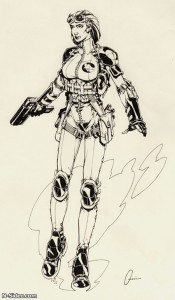
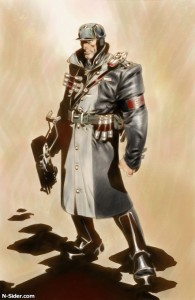
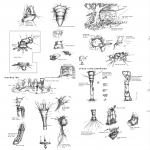
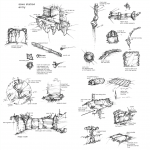
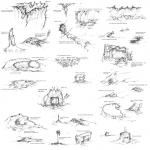
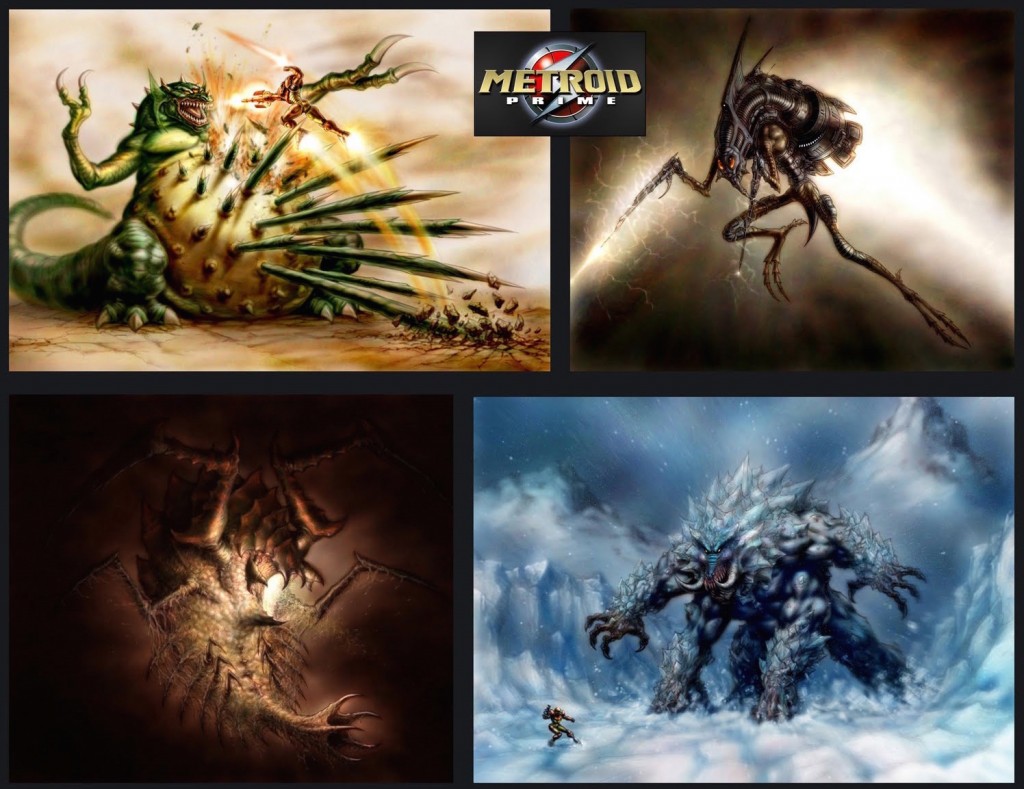
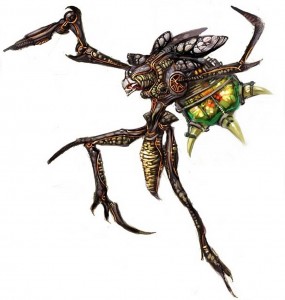
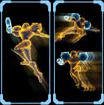
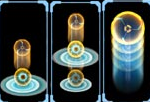
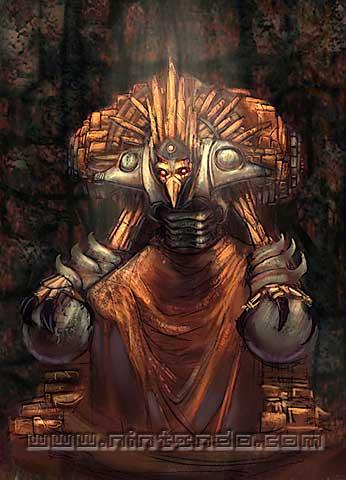
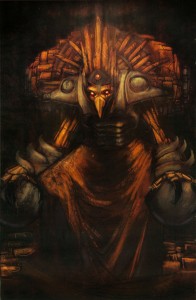
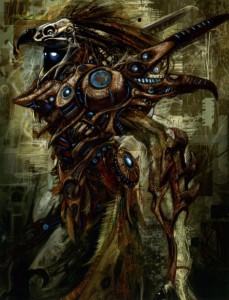
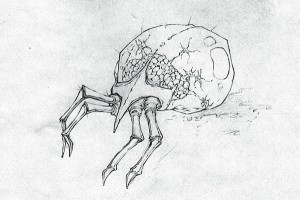
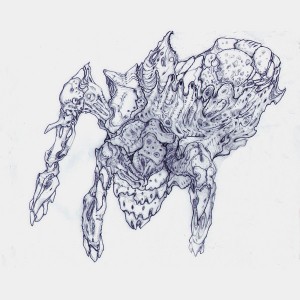
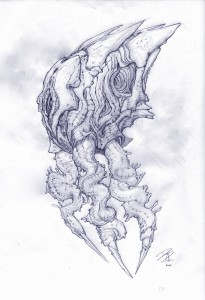
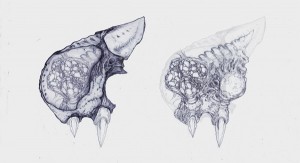
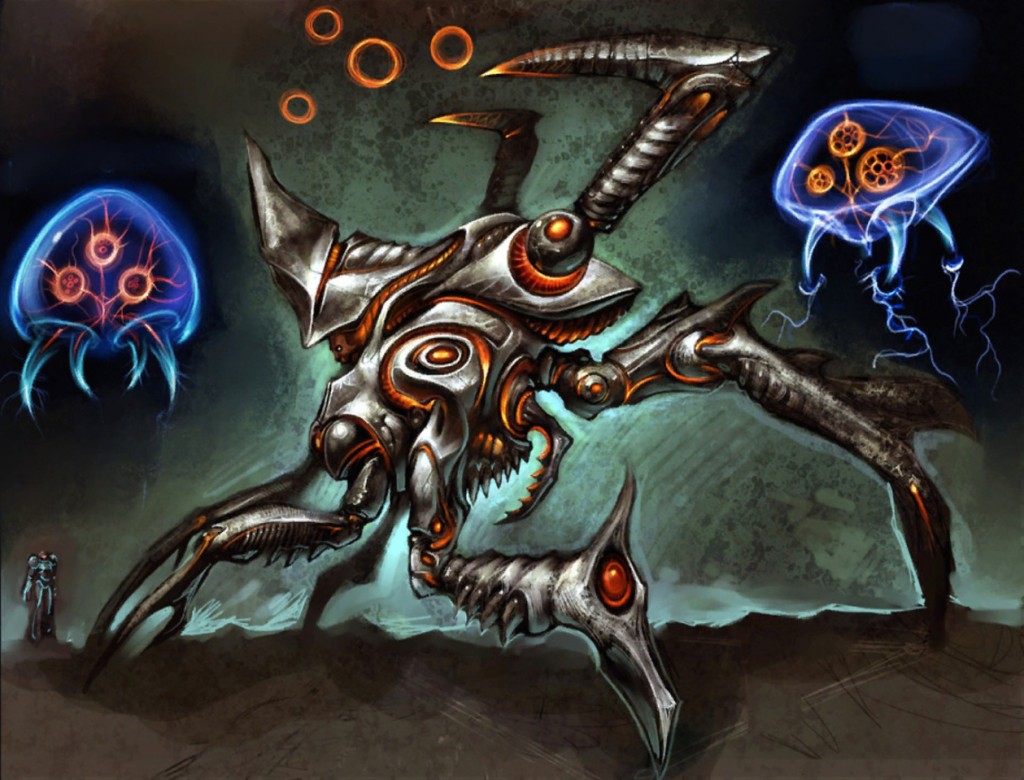
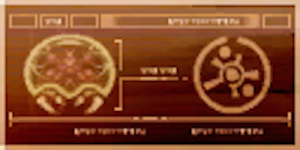
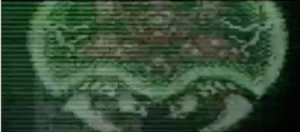
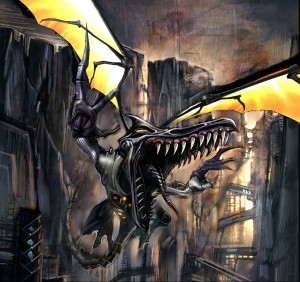
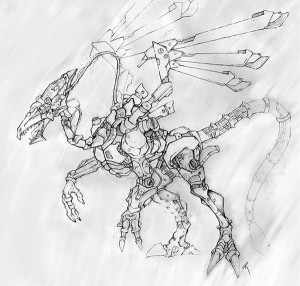
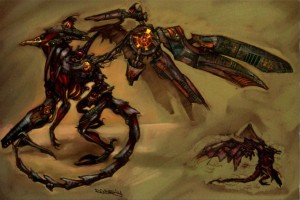
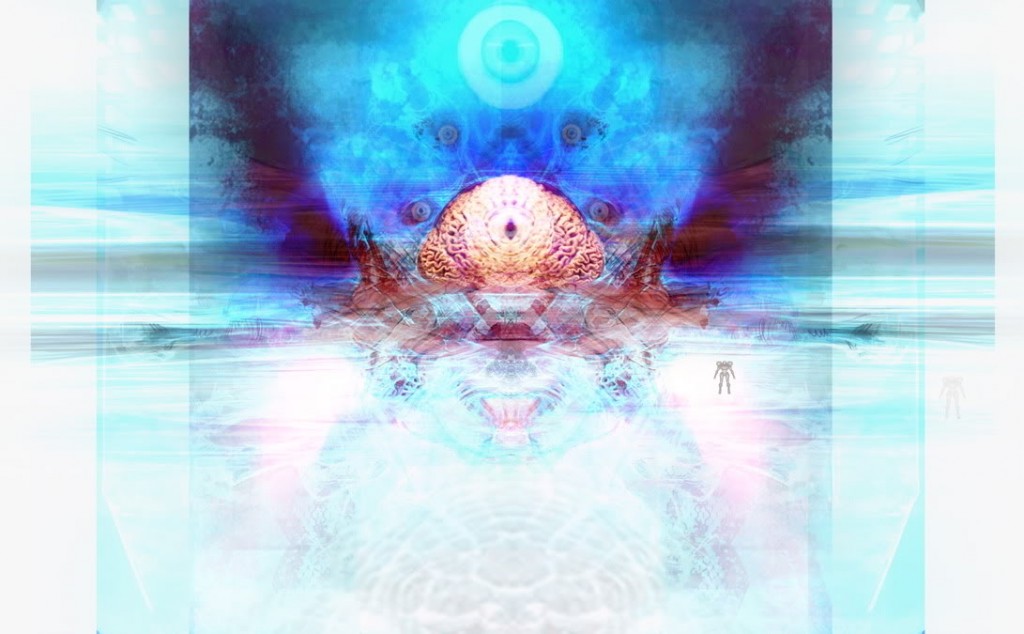
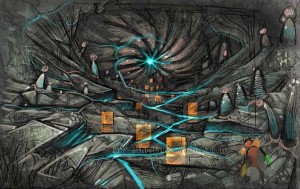
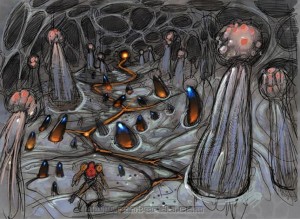
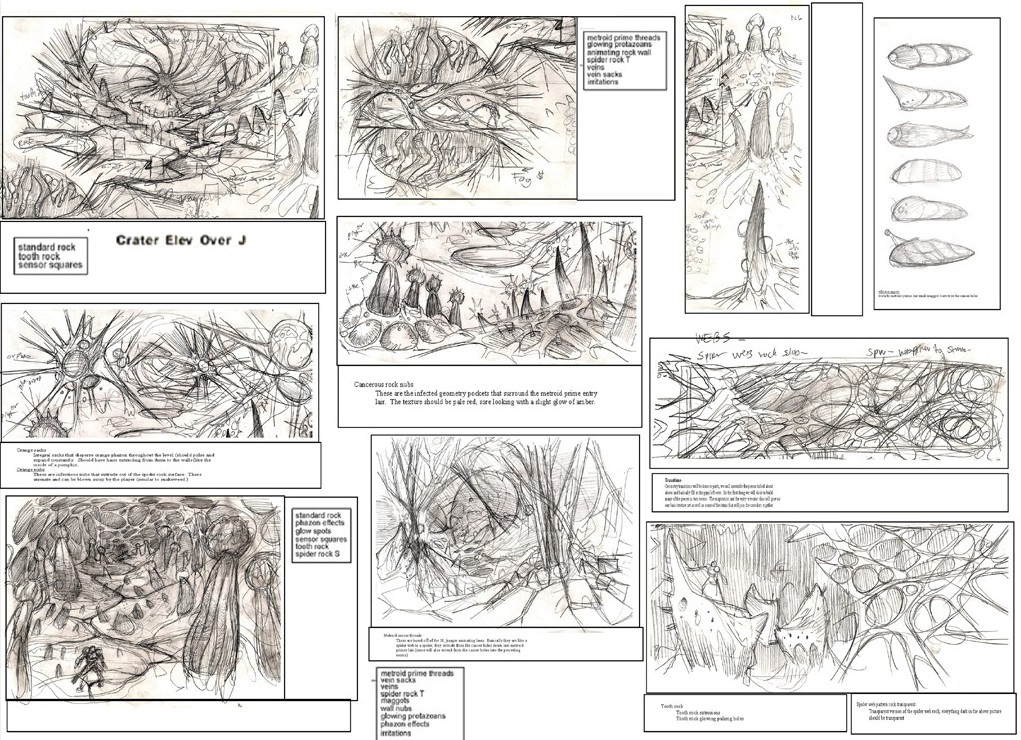
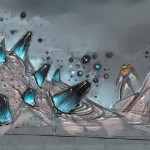
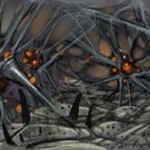
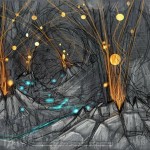
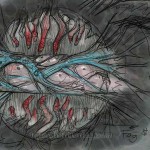
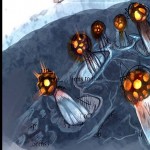
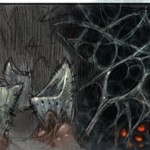
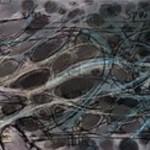
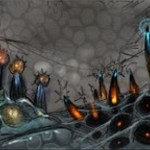
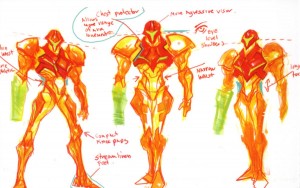
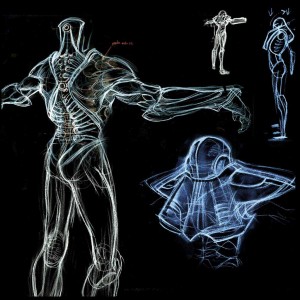
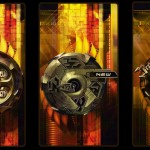
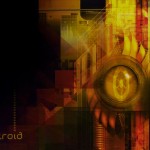
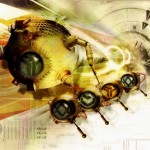
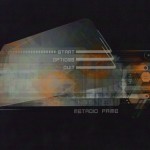
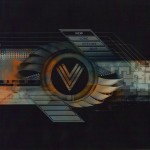
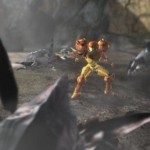
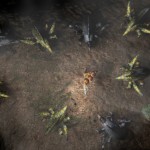
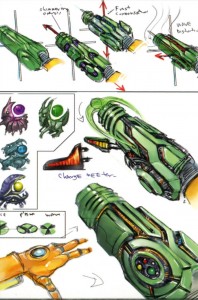
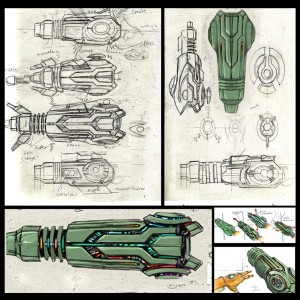
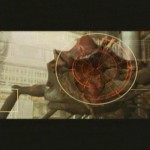
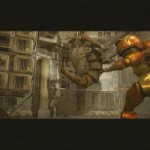
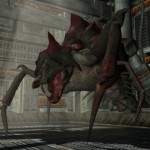
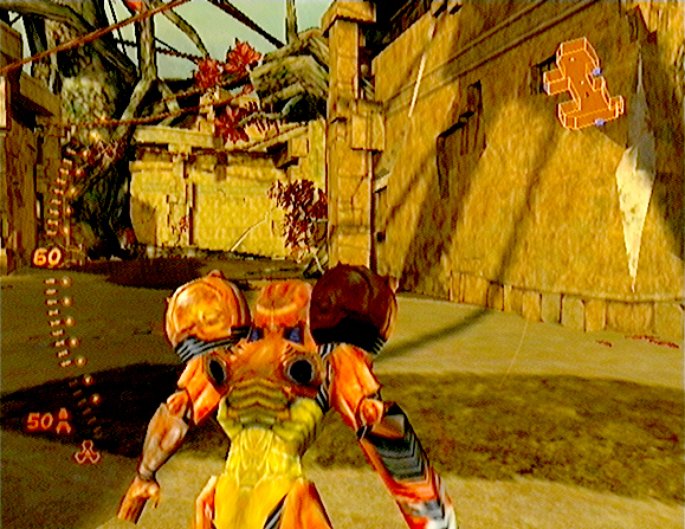
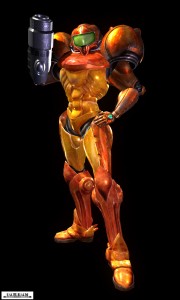
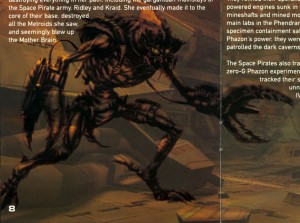
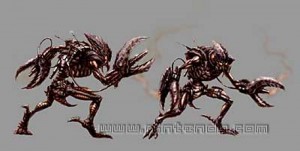
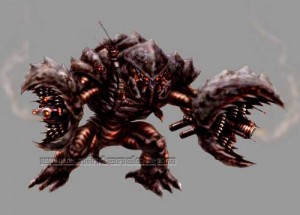
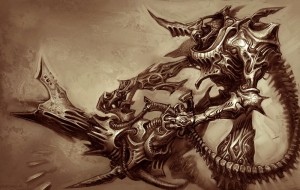
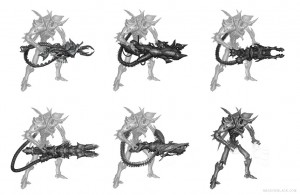
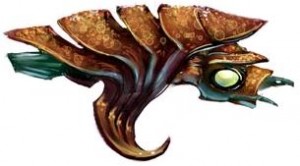
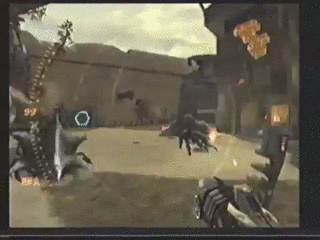
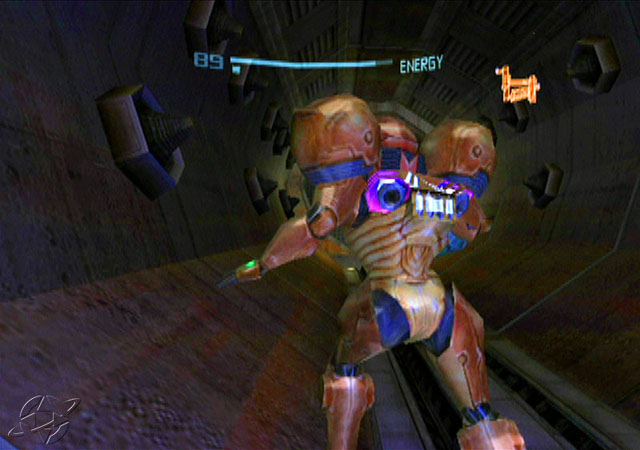
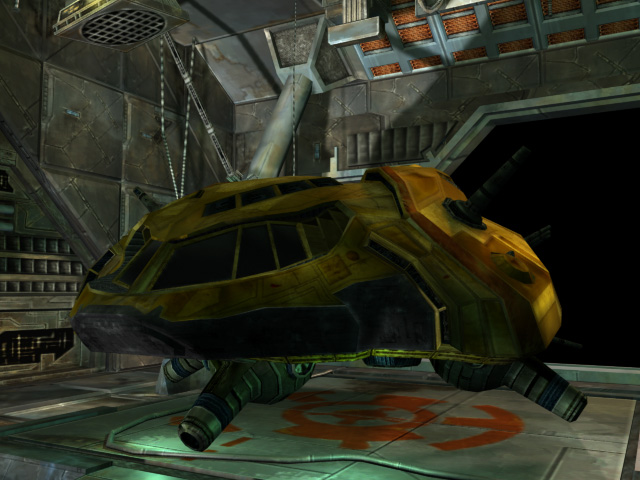
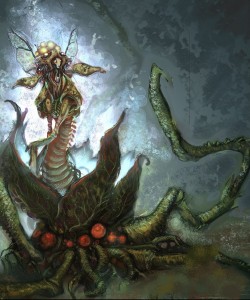
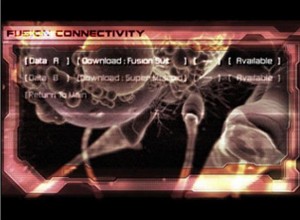
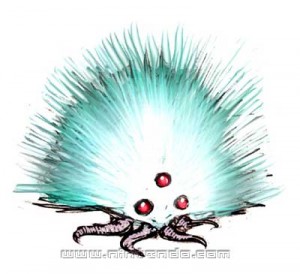
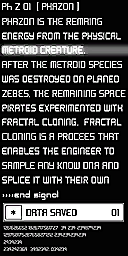
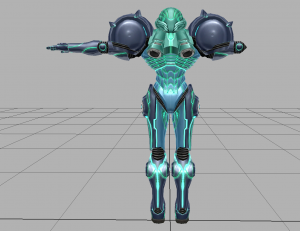
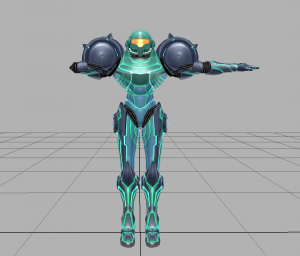
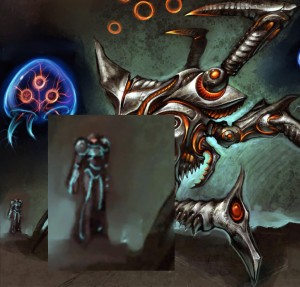
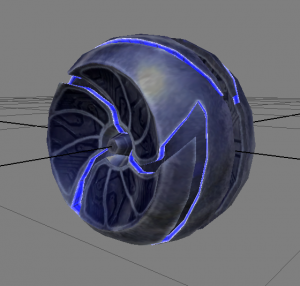
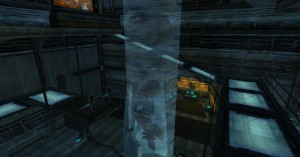
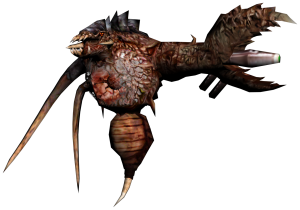

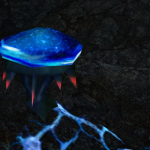
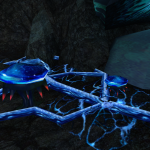
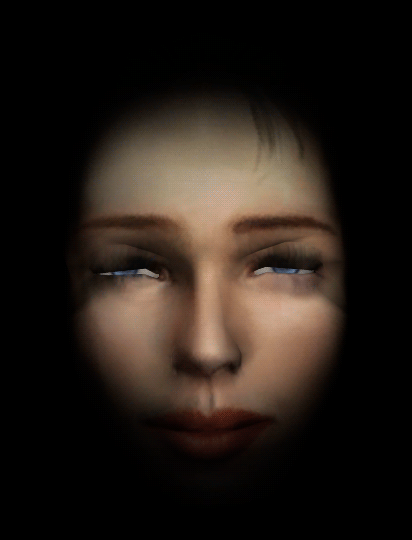
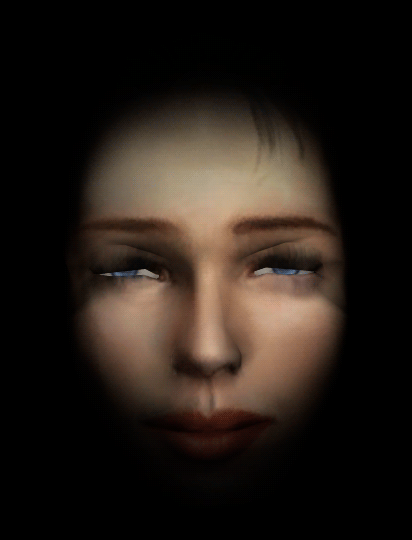
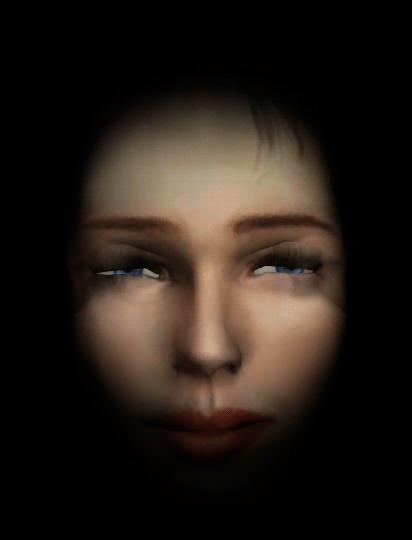
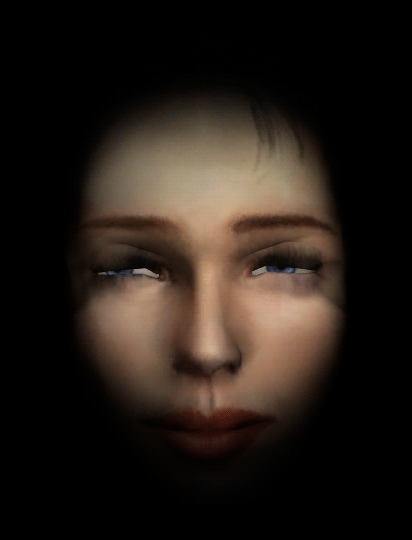
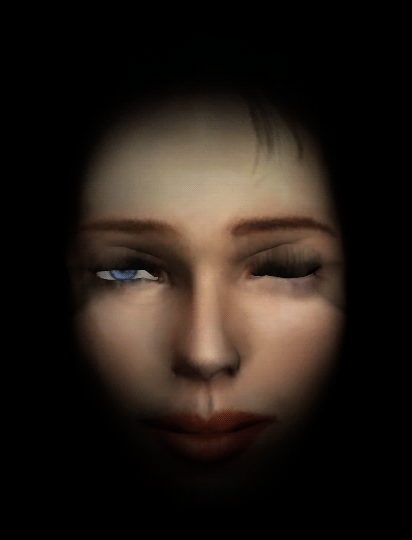
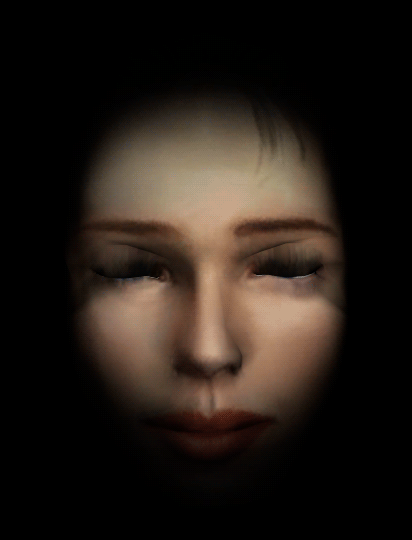
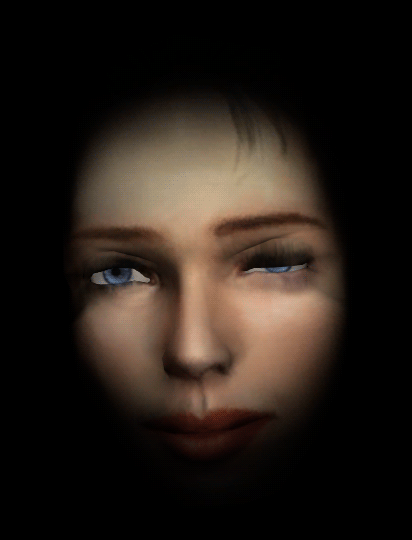
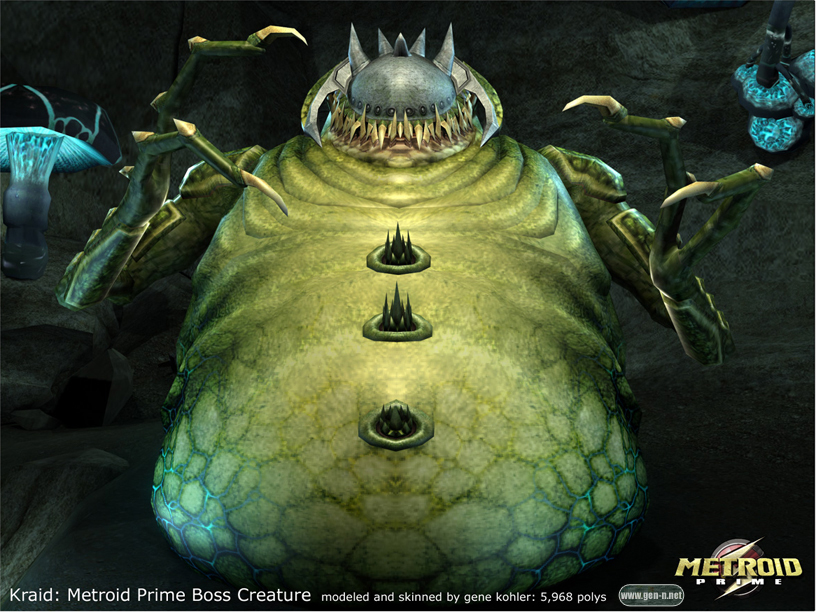
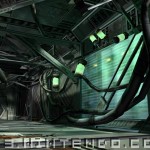
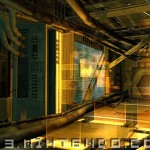
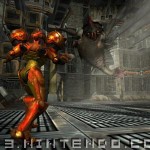
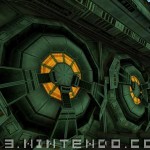
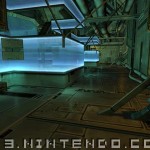
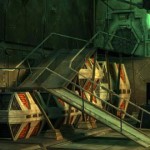
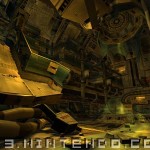
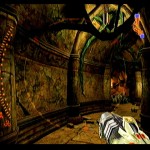
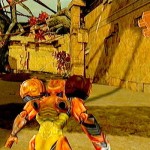
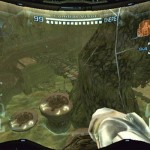
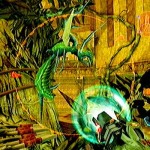
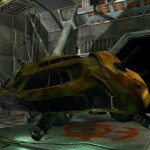
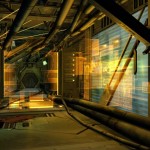
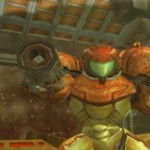
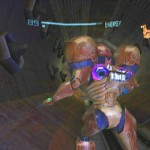
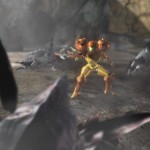
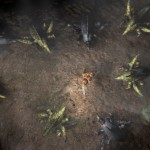
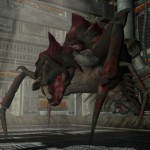
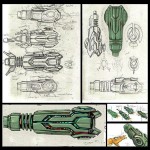
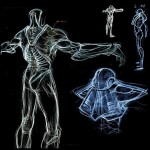
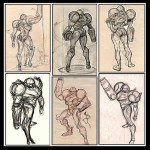
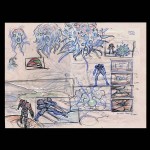
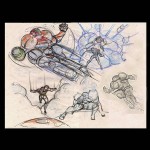
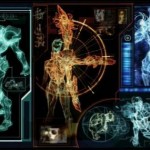
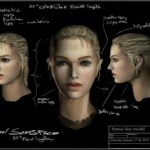
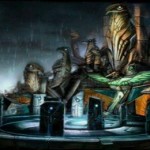
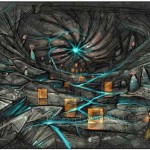
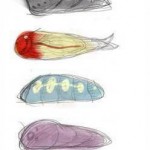
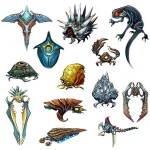
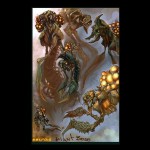
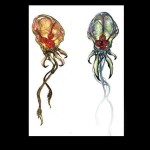
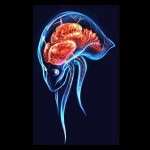
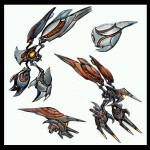


 (20 votes, average: 4.55 out of 5)
(20 votes, average: 4.55 out of 5)
This is supposed to be an early menu, although the video doesn’t actually seem to show a menu, just a background.
It’s probably the menù background, as it was similar in the final game. The “First Person Adventure” part is interesting, could this one have been used at some E3? Thanks Robert :)
There are some test animation files in the game, but I have no way to use them.
Interesting find Jake, could you extract them somehow?
Well, there is a .pak file in the main directory called TestAnim.pak, inside there seems to be a lot of texture files, animation files etc, but as I said, I have no way of using them.
Thanks for the reply Jake :) I’ll try to find someone that could be able to do something with that file
maybe this person?
I haven’t been on there in a while, I think Interdpth might be able to do something with them, I’ll ask him over Xcult…
Hi Hi, didn’t see these on there so I though I would share them with you
Beta Phazon
http://i912.photobucket.com/albums/ac328/GF_Kennon/Misc/BetaPhazon.png
Unused Prime Speech
http://www.youtube.com/watch?v=WmUx77iU0Ec
I seen some beta textures and there is a beta gravity and unused ripper in there somewhere, if someone wants ill find em, also upload a different Video of that Prime speech, but when your internet is 5kb/s speed, its not easy, so that’s all for the moment.
Some of that up there don’t look beta to me, I’m looking at some of the artwork, that came from the gallery in the /final/ game ;p
Ether way some very interesting shots, and if you want some specific angles and stuff, just pester me via my EMail
[email protected]
Thanks for the contribution Kennon, i’m going to add your info in the description :)
I think I’ll do a video on this, very interesting.
Hey, I’d just like you to know, that is not a beta phazon suit, but a beta Gravity suit.
http://i83.photobucket.com/albums/j318/interdpth/betagravity.png
Feel free to add the pic above or edit however you want.
The inside of her gunship is also textured a bit
http://i83.photobucket.com/albums/j318/interdpth/insideship.png
Cool stuff.
Thanks Interdpth! :) I’m going to add your info in the article this evening
Half of these youtube links are dead. What the hell? Some archive this site is….
Cant find that mosquito looking jetpack pirate again. Honestly the scariest thing to come out of MP1’s dev cycle.
Still a lot more in depth and comprehensive than the garbage over on TCRF. Those bastards and their boner for 2D games no one cares about. It was 3D games that made video games mainstream and there is nothing wrong about celebrating the 2000s era of games unlike those bastards and their re writing of history with personal politics.
Hello. I am the author of the article. The videos were temporarily down due to reasons out of my control but I have now restored them. Hopefully that helps.